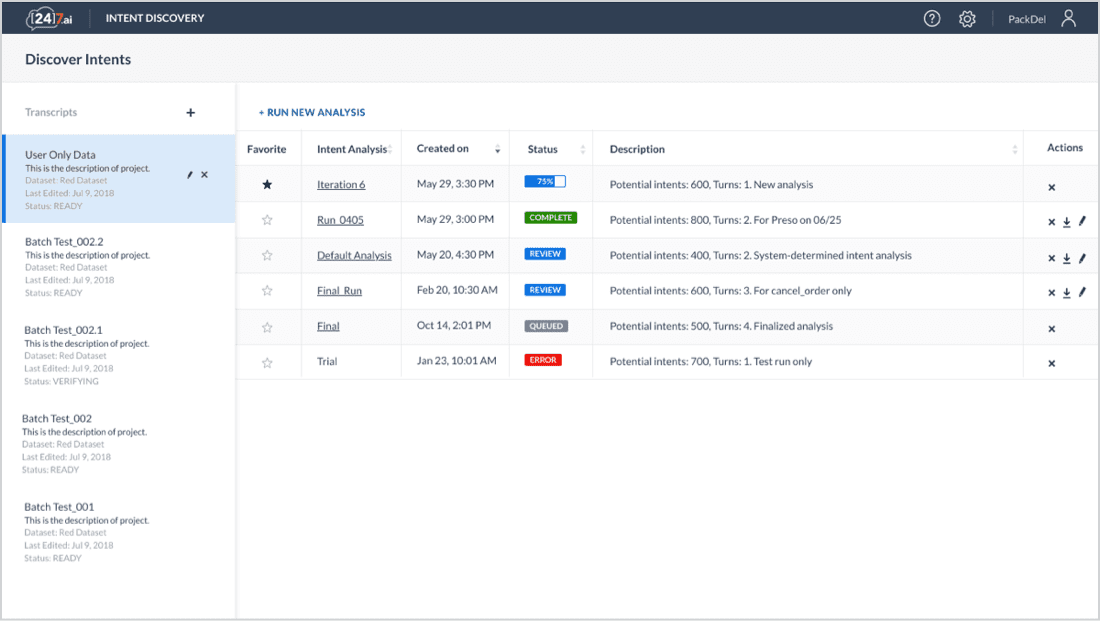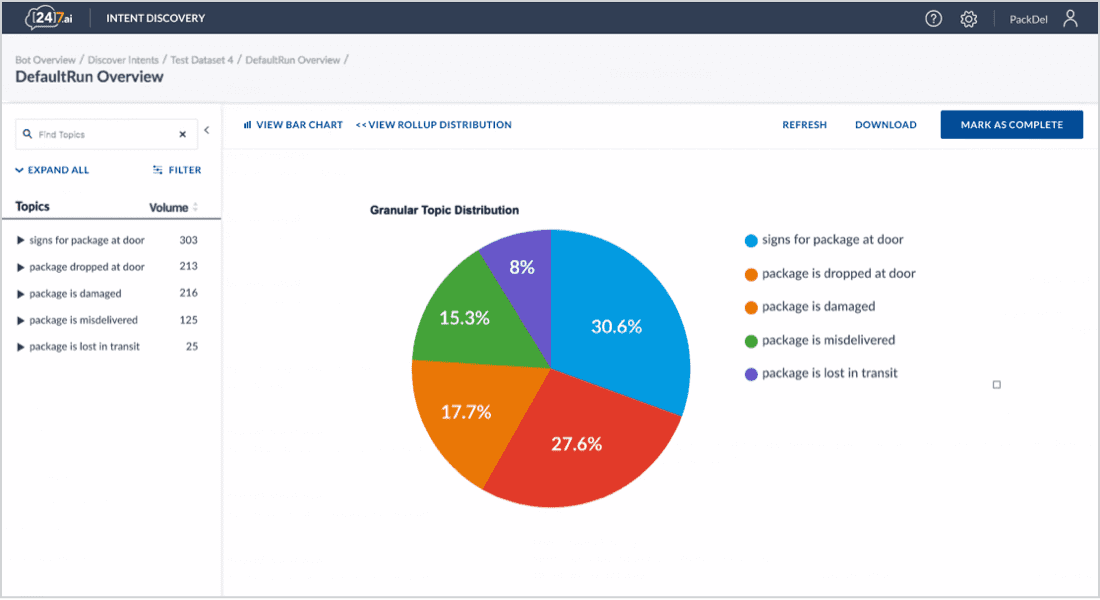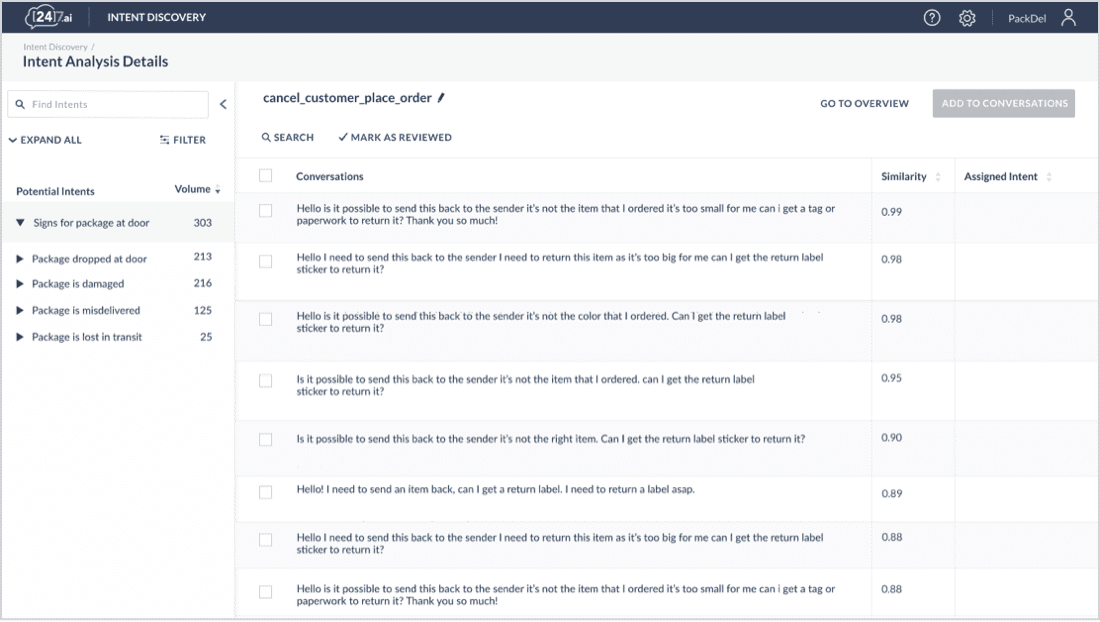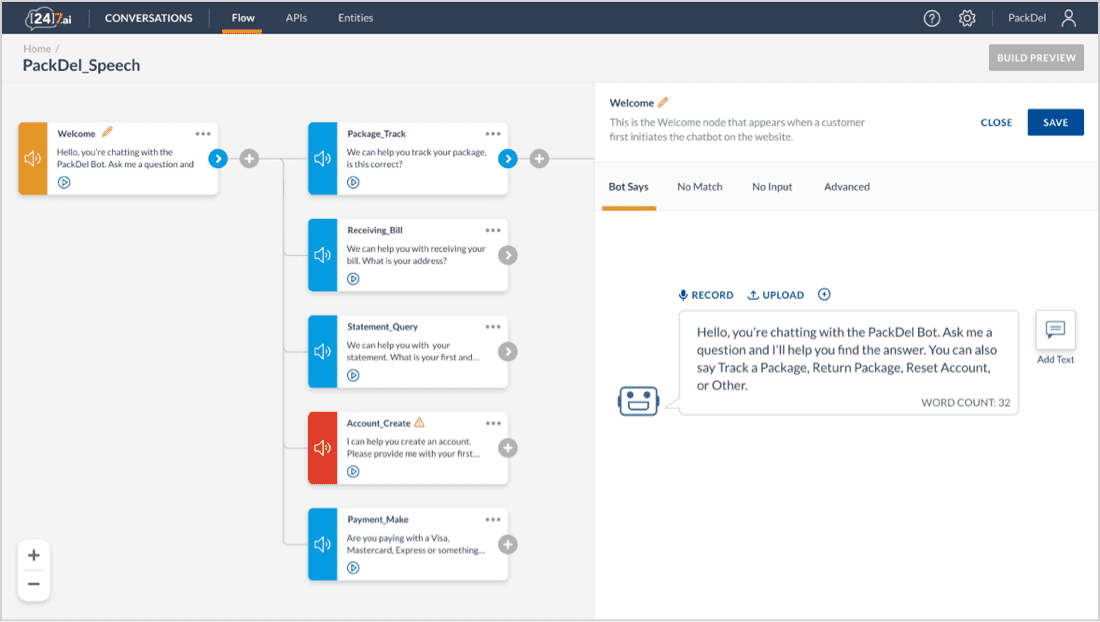

What if I told you that, with the right tool, you would know what to bot and how to bot—in just a few minutes and without IT support? That’s right: You’ll instantly discover automation opportunities, configure and deploy the right chatbot (in only a few hours), and easily make regular updates.
Sounds like a magic wand for any customer care executive, doesn’t it? Well, the state-of-the-art Intent Discovery Tool is real and ready for you today, packaged with our no-code conversational AI platform, [24]7.ai Engagement Cloud.
Most organizations discover customer intents by reading through chat transcripts. How many transcripts can one person read in a day? Maybe 100? That’s less than 0.1 percent of a typical enterprise’s weekly volume. So, how do you discover customer intents without spending days sifting through mountains of transcripts? Intent Discovery Tool!

Now that you have good insight into customer intents, the next step is to decide which ones to automate with a chatbot. We recommend you follow these simple guidelines.


Now that you’ve discovered your customers’ top intents and picked the ones to automate, the next step is to create a chatbot.
Don't worry: You won’t assemble a team of data scientists and software developers and wait weeks to see this bot come alive. [24]7.ai Engagement Cloud enables even nontechnical users to create a conversational chatbot using simple DIY tools.
We’ll explore this further in future blog posts.

So you’ve created the chatbots you need for the customer intents you’ve identified, all in a couple of hours. Great!
But you’re not done because, like everything else, bots need to be maintained and regularly tuned. They should be continually trained with a larger variety of utterances (different ways of asking the same question) so they become increasingly robust in their handling of linguistic variations. Which, in turn, provides your customers with much faster and higher quality responses (kicking off a virtuous cycle of greater customer satisfaction, stronger brand loyalty, higher sales, and so on).
Intent Discovery Tool pitches in here, too, processing all your chat transcript data once a week to discover new customer intents and discern any shifts in volumes so you’re prepared to act accordingly. Examine the transcripts again and repeat the above cycle to maintain your bots.
I know: Saying “Use AI to Use Conversational AI” sounds like a recursive loop. But Intent Discovery Tool does, in fact, use AI to facilitate the design of your conversational AI chatbot! It ingests an enormous number of transcripts and runs a bunch of AI algorithms—our “secret sauce”—to identify the breadth and depth of customer intents. It also labels them using a proprietary algorithm.
So how does this all work? First, our algorithms scan the transcripts for semantic similarities. For example, when one transcript says, “I seem to be having issues while logging in” and another says, “I am having trouble accessing my account,” the algorithms group them together under one label because they refer to the same problem, albeit in different words.
This grouping step also decides where to draw boundaries between groups. For example, is “I have a question about my warranty” a purchase-related query or a service-related query? Our algorithms take the best guess here, and then it’s up to you to take advantage of the easy-to-use interface to review the choices, tweak them, and take the next steps.
Keep an eye out for future blog posts in this series from [24].7ai Product Management. We’ll give you a sneak peek into many of the unique, innovative products and tools that form our transformative [24].7ai Engagement Cloud platform.
To learn more, please write us at info@247.ai.